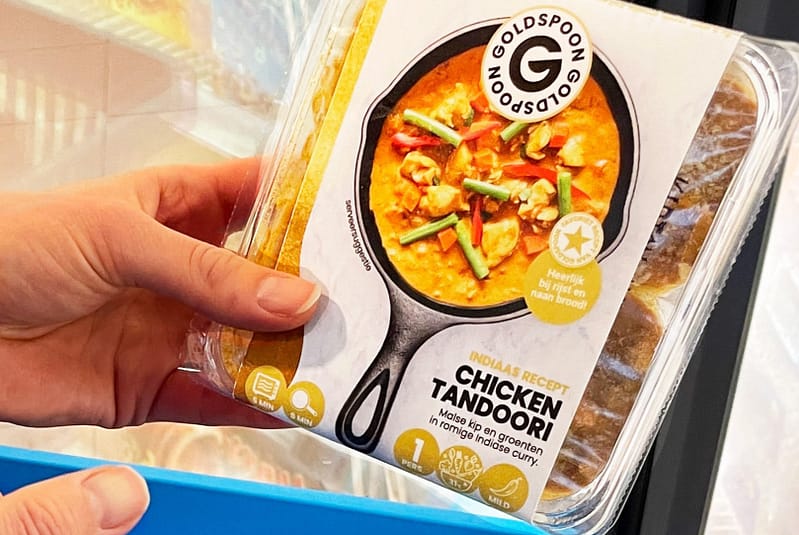Within the Out-of-Home (OOH) landscape, there is a remarkable shift underway. Traditional manual buying methods have been gradually giving way to Programmatic DOOH, an automated approach that offers significant advantages over the traditional manual methods. Since DOOH is once again the fastest-growing digital medium this year (according to Digital Ad Spend Study, Deloitte, 2022), we have briefly written a blog about the advantages and possibilities.
Advantages of Programmatic Out of Home (DOOH)
The Effectiveness of Programmatic DOOH
Programmatic DOOH offers significant advantages in terms of effectiveness. By utilizing advanced technologies and algorithms, advertisers can accurately target and optimize their OOH campaigns. Unlike traditional manual buying, where advertisers often reach a broad audience without much consideration for specific demographic data, Programmatic DOOH enables ads to be shown to the right audience, at the right time, and in the right location.
This results in higher ad effectiveness and improved ROI. Since programmatic DOOH allows for more precise targeting, smaller advertisers can also leverage this impactful medium. Within programmatic, there is no minimum budget requirement, making it accessible to a broader range of advertisers.
How programmatic helps with the personalization of DOOH
One of the most exciting aspects of Programmatic DOOH is the ability to personalize. By leveraging data, advertisers can tailor OOH ads to the specific interests and needs of individual consumers. This means advertisers can display more relevant ads, increasing the chances of interaction and brand recognition. For example, if a user is a sports enthusiast, a Programmatic DOOH campaign can show relevant sports-related ads when that person is near a sports event or gym. This level of personalization was previously unimaginable with manual buying methods.
Out of Home and Data Integrations
Programmatic DOOH also enables data integrations. By leveraging sources such as location data, demographic data, and behavioral information, advertisers can gain valuable insights into their audiences and the effectiveness of their OOH campaigns. This data can be analyzed and used to optimize campaigns in real-time. For example, advertisers can pause or adjust ads based on weather conditions, traffic situations, or other external factors. This level of flexibility and data-driven decision-making is unprecedented compared to traditional manual buying methods.
What are the targeting options within DOOH (Digital Out of Home)?
Within Programmatic DOOH, there are various targeting options available to precisely reach your desired audience. The advantage of this targeting is that you can connect with your specific audience rather than the mass. It is also possible to buy media at smart moments. The current BRO (Broadcast Reach Optimization) is based on historical data and lacks a forward-looking view. With smart targeting, you can appear in locations that have historically been quiet. The most commonly used targeting methods are:
Geographical Targeting
Programmatic DOOH enables advertisers to target specific geographic areas. This can be done based on countries, cities, postal codes, or even precise GPS coordinates. Advertisers can thus display their ads in locations where their target audience is present or where they want to create a specific impact.
Demographic targeting
By utilizing demographic data, advertisers can target their OOH advertisements to specific demographic characteristics such as age, gender, income, education level, and more. This aids in reaching the right audience most likely interested in the promoted product or service.
Time-based targeting
With Programmatic DOOH, advertisers can display their ads at specific times of the day or days of the week. This is useful for targeting specific audience segments based on their daily routines or behaviors. For example, a cereal brand may choose to display their ads during the morning rush hour when people are commuting to work or school.
Contextual targeting
Advertisers can contextually target OOH advertisements based on the environment in which they are displayed. For example, a sports brand may choose to display their ads near sports facilities, stadiums, or during major sporting events. This ensures relevant and impactful advertisements that align with the interests of the audience.
Moments targeting
Programmatic DOOH allows advertisers to choose moments when the user wants to be visible. This is a specific solution not directly related to location, demographics, or time. It mainly involves trigger-based advertising. This means that an advertisement is activated after a certain trigger is activated. Consider the following moments:
- During a radio advertisement: Many people listen to radio commercials while on the road. Since there are also many opportunities around roadway OOH, this moment can be used to reinforce medium types.
- Targeting traffic jams: On the highway, it may also be interesting to purchase only when there are traffic jams. This increases the chance of reaching your target audience.
- Sports results: Companies with a certain affinity for sports may want to advertise based on specific sports outcomes. By adding this feature to a DSP, it's possible to activate advertisements when, for example, Feyenoord wins a match.

Weather targeting: It's possible to activate p-DOOH advertisements only during specific weather conditions. This allows an advertiser to be visible on DOOH only when it's raining.

Specific examples for certain sectors:
As mentioned above, there are plenty of opportunities for every advertiser to leverage programmatic DOOH. Here are some examples for a few verticals:
Retail:
In the retail sector, Programmatic DOOH can be a powerful tool to target consumers based on location and behavior. Advertisers can use real-time data to display ads on digital screens near their physical stores, capturing the attention of potential customers. For example, a clothing store can utilize Programmatic DOOH to showcase relevant ads on digital billboards near busy shopping areas, highlighting promotions or presenting new collections. Additionally, personalized creatives can help enhance this effect, such as mentioning the store location or closing time.
Travel:
For the travel industry, Programmatic DOOH can be an effective way to reach travelers and inspire them to choose a specific destination. Airports, train stations, and bus stops are ideal locations for Programmatic DOOH ads. For example, an airline could use Programmatic DOOH to display relevant flight deals on digital screens to travelers. By using weather triggers, they could make this even more relevant. If the weather is bad at the current location, they could display a destination where the weather is nice, encouraging last-minute bookings.
B2B:
For the B2B sector, Programmatic DOOH offers opportunities to reach businesses at relevant locations and times. For example, a software company targeting business professionals can use Programmatic DOOH to display ads on digital screens near conference centers or business hubs. This allows them to showcase their products or services to decision-makers and professionals interested in their specific industry.
Automotive:
In the Automotive sector, Programmatic DOOH can be used to target potential car buyers. Advertisers can utilize data on consumer purchasing behavior and interests to display relevant ads on digital billboards near car dealerships or on busy roads.
Conclusion
Programmatic Out-of-Home (OOH) offers significant advantages over traditional manual buying methods in the world of Out-of-Home advertising. It enables advertisers to create more effective campaigns through precise targeting, personalization, and data integration. With Programmatic DOOH, advertisers can display their ads to the right audience, at the right time, and in the right location, resulting in higher effectiveness and improved ROI. By using advanced technologies and algorithms, advertisers can customize OOH ads to the specific interests and needs of individual consumers. Additionally, Programmatic DOOH allows seamless data integration, enabling advertisers to gain valuable insights and optimize campaigns in real time.
With various targeting options such as geographical targeting, demographic targeting, time-based targeting, contextual targeting, and moments targeting, advertisers can precisely aim their OOH advertisements at the desired audience. Programmatic DOOH offers opportunities for various sectors including retail, travel, B2B, and the automotive industry to reach specific target groups and display impactful ads at relevant locations and times. By leveraging Programmatic DOOH, advertisers can harness the power of automation, personalization, and data to create effective and successful OOH campaigns. However, it's important to assess the added value of the channel compared to traditional OOH. A blend of approaches is often the most effective.
Are you looking to start with Programmatic DOOH but don't know where to begin? Then get in touch with us .







